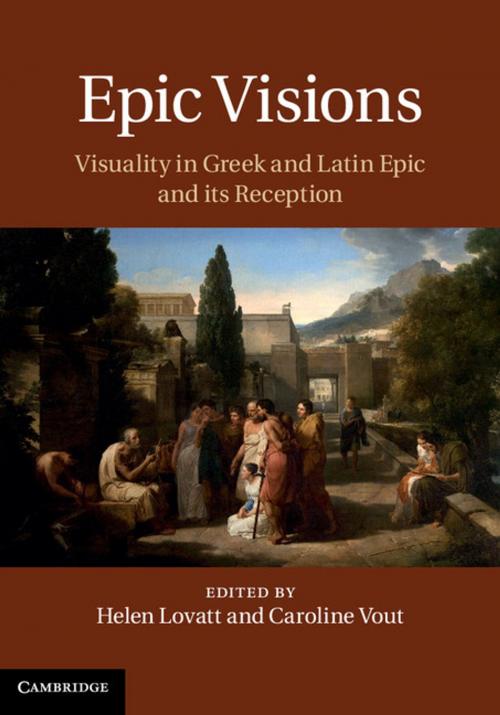Epic Visions
Visuality in Greek and Latin Epic and its Reception
Nonfiction, History, Ancient History, Fiction & Literature, Literary Theory & Criticism| Author: | ISBN: | 9781316262566 | |
| Publisher: | Cambridge University Press | Publication: | August 15, 2013 |
| Imprint: | Cambridge University Press | Language: | English |
| Author: | |
| ISBN: | 9781316262566 |
| Publisher: | Cambridge University Press |
| Publication: | August 15, 2013 |
| Imprint: | Cambridge University Press |
| Language: | English |
This wide-ranging, interdisciplinary collection explores different ways of visualising Greek and Roman epic from Homer to Statius, in both ancient and modern culture. The book presents new perspectives on Homer, Virgil, Ovid, Lucan, Valerius Flaccus and Statius, and covers the re-working of epic matter in tragedy, opera, film, late antique speeches of praise, story-boarding, sculpture and wall-painting. The chapters use a variety of methods to address the relationship between narrative and visuality, exploring how and why epic has inspired artists, authors and directors, and offering fresh visual interpretations of epic texts. Themes and issues discussed include: intermediality, ekphrasis and panegyric, illusion and deception, imagery and deferral, alienation and involvement, the multiplicity of possible visual responses to texts, three-dimensionality, miniaturisation, epic as cultural capital, and the specificity of genres, both literary and visual.
This wide-ranging, interdisciplinary collection explores different ways of visualising Greek and Roman epic from Homer to Statius, in both ancient and modern culture. The book presents new perspectives on Homer, Virgil, Ovid, Lucan, Valerius Flaccus and Statius, and covers the re-working of epic matter in tragedy, opera, film, late antique speeches of praise, story-boarding, sculpture and wall-painting. The chapters use a variety of methods to address the relationship between narrative and visuality, exploring how and why epic has inspired artists, authors and directors, and offering fresh visual interpretations of epic texts. Themes and issues discussed include: intermediality, ekphrasis and panegyric, illusion and deception, imagery and deferral, alienation and involvement, the multiplicity of possible visual responses to texts, three-dimensionality, miniaturisation, epic as cultural capital, and the specificity of genres, both literary and visual.















